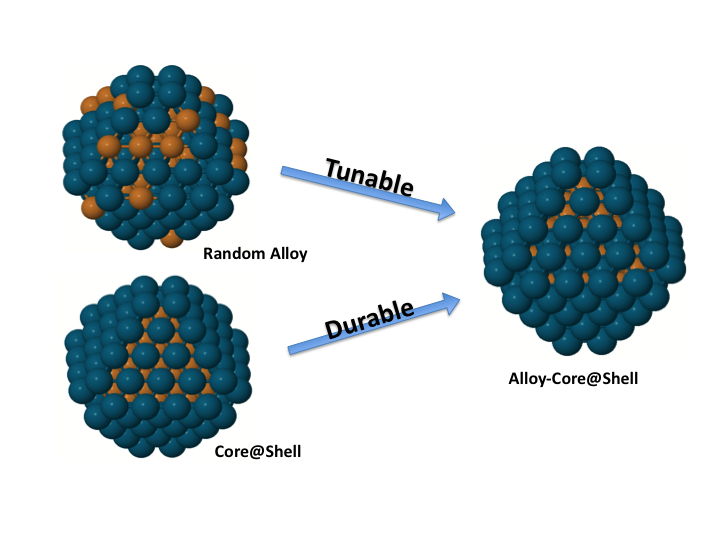

A hybrid biofunctional anticancer nanocomplex (upconversion nanoparticle core with embedded beta-emitter 90Y coated with amphiphilic polymer and coupled to targeted toxin DARPin-PE40 termed UCNP-R-T) designed, produced ,and tested in this work is classified as a targeted theranostic agent, which enables both diagnostics and treatment of malignant neoplasms. One of the approaches to ameliorate these problems is based on enhancement of the targeting performance of new-generation drugs ( 32– 34). However, most of the drugs developed and deployed for targeted therapy, including those based on inorganic nanoparticles, exhibit relatively low targeting efficiency and significant systemic toxicity, hampering the achievement of optimal therapeutic outcomes ( 30, 31). This allows significant improvement of the treatment outcomes by using drugs with selective effect on target cancer cells. ( C) Time evolution of the specific radioactivity of UCNP-R-T following an intratumoral injection at doses of 10 μg/g (0.8 MBq) and 15 μg/g (1.2 MBq).Ĭurrently, there is a trend toward increasing efficiency of anticancer therapy by development of new approaches of personalized medicine, which rely on diagnostics of the molecular profiles of malignant tumors.
FUNCTIONALIZED CORE SHELL NANOPARTICLES PLUS
Upper (orange rectangles), middle (green circles), and lower (blue triangles) curves show decrease of the UCNP-R-T radioactivity in the tumor due to 90Y decay, UCNP-R-T clearance from the tumor calculated based on UCNP photoluminescence, and combined effects of 90Y decay plus UCNP-R-T clearance. (Magnification: 2×.) ( B) Dynamics of the radioactivity decrease in the tumor following an intratumoral injection of UCNP-R-T at a dose of 10 μg/g. The images were captured at specified time intervals, following an intratumoral injection of UCNP-R-T at a dose of 10 μg/g. The excitation/emission in the epiluminescence mode, 980 nm/485–831 nm.
FUNCTIONALIZED CORE SHELL NANOPARTICLES SERIES
A time-lapse series of the overlays of the bright-field and epiluminescence images of a tumor-bearing mouse acquired by a home-built whole-animal imaging system. ( A) Retention of UCNP-R-Ts in the tumor.

Retention and activity of UCNP-R-T in the human breast adenocarcinoma SK-BR-3 xenografts on athymic mice. The transmembrane protein HER2 is one of the most well-studied tumor markers its overexpression represents a hallmark of many types of tumors associated with an increased risk of metastasis and resistance to chemotherapy ( 23).įig. DARPin endows targeting properties to UCNP-R-T. This theranostics complex termed UCNP-R-T contains a targeting biomolecule, which belongs to the class of designed ankyrin repeat proteins (DARPin), and is specific to cells overexpressing HER2 receptors ( 21, 22). Beta-emitter 90Y enclosed in the core of UCNP features a short half-life (63 h) and high linear density of the radiation energy transfer, which allows localization of radiation impact within several millimeters, leading to reduction of adverse side effects ( 19, 20). Two toxic agents––radioactive beta-emitting isotope 90Y used for targeted radionuclide therapy ( 11), and a highly efficient fragment of exotoxin A from Pseudomonas aeruginosa (PE40) ( 18)––are coupled to the UCNP core and exert toxicity to cancer cells. The combined therapy with UCNP-R-T was demonstrated in vivo. When both therapeutic agents were combined into UCNP-R-T, the synergetic effect increased markedly, ∼2200-fold, resulting in IC 50 = 0.0024 μg/mL. Specific binding and uptake of UCNP complexes in SK-BR-3 cells was observed, with separate 90Y- and PE40-induced cytotoxic effects characterized by IC 50 140 μg/mL (UCNP-R) and 5.2 μg/mL (UCNP-T), respectively. The photophysical properties of UCNPs enabled background-free imaging of the UCNP-R-T distribution in cells and animals. The resultant hybrid complex UCNP-R-T was tested using human breast adenocarcinoma cells SK-BR-3 overexpressing HER2 receptors and immunodeficient mice, bearing HER2-positive xenograft tumors. We report combined therapy using upconversion nanoparticles (UCNP) coupled to two therapeutic agents: beta-emitting radionuclide yttrium-90 ( 90Y) fractionally substituting yttrium in UCNP, and a fragment of the exotoxin A derived from Pseudomonas aeruginosa genetically fused with a targeting designed ankyrin repeat protein (DARPin) specific to HER2 receptors.


 0 kommentar(er)
0 kommentar(er)
